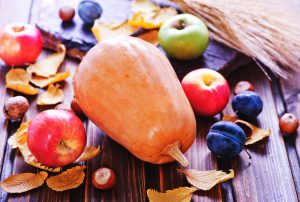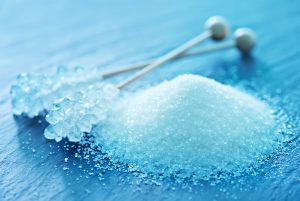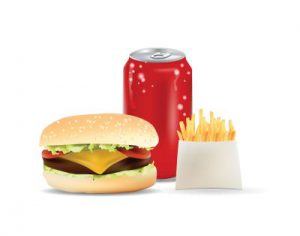This edition contains the following articles:
- Thank You for Completing the Survey
- Answer to Question Frequently Asked About Added Sugars Variables in NDSR Output Files
- Why Aren’t Regional Fast Food Chains or Non-Fast Food Restaurants Included in NDSR?
- Nutrition Evaluation of the Emergency Meals-to-You Program (eMTY)
Thank You for Completing the Survey
Many thanks to those of you who completed our recent Client Survey! We are reviewing the results and your suggestions closely to help improve NDSR and our services. Some of the questions and requests that came in through the survey will be answered in future issues of the NCC News Bite. If you have any other questions about using NDSR, we invite you to email us at NDSRhelp@umn.edu anytime. We like hearing from you, and you don’t have to wait for the next survey to submit other questions. Our User Support team is available to help answer your questions.
Answer to Question Frequently Asked About Added Sugars Variables in NDSR Output Files
NDSR includes two Added Sugars variables in the NDSR output files–Added Sugars (by Available Carbohydrate) and Added Sugars (by Total Sugars), and often we are asked to explain the difference between the two. So, here it is, starting with the general definition of Added Sugars.
Added Sugars are those sugars and syrups added to foods during food preparation or commercial food processing. Ingredients designated as “added sugar” foods in the NCC database include: white sugar (sucrose), brown sugar, powdered sugar, honey, molasses, pancake syrup, corn syrups, high fructose corn syrups, invert sugar, invert syrup, malt extract, malt syrup, fructose, glucose (dextrose), galactose, and lactose. They do not include mono- and disaccharides occurring naturally in foods, such as lactose in milk or fructose in fruit.
The Added Sugars (by Available Carbohydrate) value assigned by NCC to foods considered to be sources of added sugars represents the amount of available carbohydrate present in the food, which includes saccharides of all types. Mono- and disaccharides along with saccharides with a higher degree of polymerization that are resistant to digestion (e.g., trehalose) are included under this definition.
For example, corn syrups with different Dextrose Equivalency (DE) contain a high amount of trisaccharides and other higher saccharides (approximately 75%) due to the incomplete hydrolysis of the cornstarch. These more complex sugars are included under Added Sugars (by Available Carbohydrate).
The Added Sugars (by Total Sugars) value assigned by NCC to foods considered to be sources of added sugars represents the amount of total sugars present in the food, which includes only mono- and disaccharides. The Added Sugars (by Total Sugars) variable aligns with how this food component is defined by the U.S. Food and Drug Administration for Nutrition Fact labeling.
Do you have questions about other nutrients and food components in NDSR output files? Note that the NDSR User Manual includes detailed nutrient information in Appendix 11. Also, detailed information may be found on our website (definitions and units can be viewed by clicking on category titles).
Why Aren’t Regional Fast Food Chains or Non-Fast Food Restaurants Included in NDSR?
The NCC Food and Nutrient Database currently includes menu items for 23 leading fast food restaurants. Nonetheless, we’re often asked why we don’t include more regional fast food chains or popular non-fast food restaurants in the database. The answer to this question primarily relates to resource constraints, as adding and updating restaurant menu items is labor intensive. Also, in some cases information needed to add menu items to our database are lacking (e.g. restaurant does not provide ingredient listing or basic nutrient content information for menu items).
To assist you with data entry of foods reported from regional fast food chains and non-fast food restaurants that aren’t found in the database, we suggest you look for a close match in the database, either generically (from the mixed dish, sandwich, or salad hierarchy) or from a restaurant that we do have. Examples are 1) if a Starbucks grande café latte is reported – look for the generic café latte and choose the appropriate FSU; 2) the Applebee’s Oriental Chicken Salad – look in the salad hierarchy for the Asian chicken salad; 3) a Carl’s Jr. hamburger – choose the Hardee’s hamburger; and 4) for a blooming onion – enter as ‘onion rings’ and have the participant estimate it as a portion of onion rings. For foods that are reported often, and for which there isn’t a database option that fits your needs, you can submit it for a New Food Resolution and note under “Other Information” that you would like the food considered for addition to the database. Please feel free to contact User Support at NDSRhelp@umn.edu if you have any additional suggestions for generic restaurant food items to add to the database.
Nutrition Evaluation of the Emergency Meals-to-You Program (eMTY)
NCC was pleased to carry out an analysis of the nutritional quality of meals delivered to rural children in households with lower income as part of the United States Department of Agriculture (USDA) Emergency Meals-to-You (eMTY) program. Over the summer of 2020 the eMTY program provided over 37 million meals to 275,000 rural children in 43 states through home-delivered boxes of shelf-stable food. The program was run by the Baylor Collaborative on Hunger and Poverty in partnership with Chartwells K12, PepsiCo Food for Good, and McLane Global. Every two weeks, a box containing food for 10 breakfasts and 10 lunches—enough for two weeks—was delivered to the student’s home or to a centralized location when necessary. The meals were to be planned to meet the USDA Summer Food Service Program (SFSP) nutrition standards. Results of the nutrition evaluation of the eMTY program are available. Click here for the full report, or download the executive summary here.
Do you have menus that need to be evaluated for nutritional quality? NCC Research Services is available to conduct menu analysis through our Menu Analysis service. Contact Kerrin Brelje at kbrelje@umn.edu for more information or a price quote.




